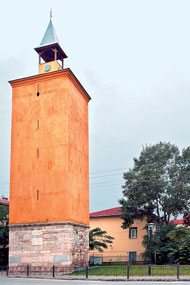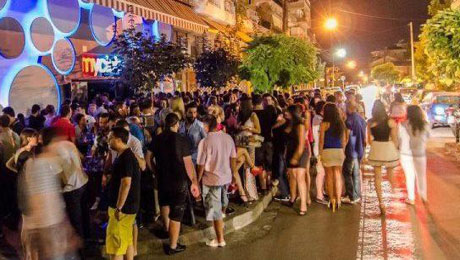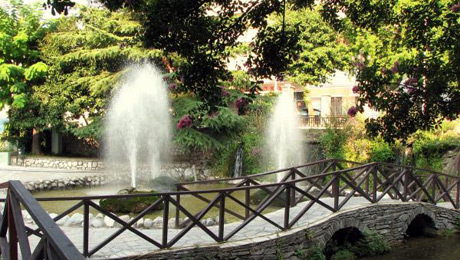Pictures: www.clickatlife.gr
Giannitsa is located between two planes, at the foot of Mount Paiko, 50 km north-west of Thessaloniki. This is the first city on the path of the traveller along the historic Via Egnatia (which united the cities of the Adriatic Sea and the Marmara Sea) and extends into the central part of Macedonia.

Despite its proximity to Thessaloniki, the city, the population of which is 30,000, has been able to acquire its own appearance and has developed as the biggest economic, commercial and industrial centre of the Pella region. A lot of refugees have come to Giannitsa and there are many Ottoman monuments which have withstood time and show the importance of the city in the newer era. One of the most important sights of the city is the Clock Tower, built by the Ottomans and recently restored. It is 25 metres high and the oldest clock tower in the Balkans.
A neoclassical building is located in the centre of the pedestrian zone which was home to a Turkish bey during the Ottoman period, and in the early 1930s it housed the hospital. Today, it is a cultural centre. The Historical and Ethnographic Museum is right next to it, which presents the history of the city.
Other interesting attractions include the mosque of Gazi Evrenos, Kaifa Baths, the Seminary, the Metropolis, the "Black statue" which depicts the hero of the city, as well as the navigable Loudias River flowing south of the city.
The centre of city life is located in the pedestrian zone of Giannitsa. There, visitors can go to restaurants, have a coffee, and the young can enjoy the nightlife in the evening.
Filippio Park is the most beautiful and largest park of the city, which is located on the hill. The municipal theatre is located there in the open where all kinds of events, such as concerts and theatrical performances are held. The park was completely renovated in 2000 and the statue of King Philip of Macedonia was placed there a few years ago.

The dried up lake
In the early 20th century, the lake of Giannitsa was a subject of the Greek-Bulgarian conflict. In her book Secrets of the Swamp (Ta Mystika tou Valtou), Penelope Delta talks about these important historical events. This is the favourite book of the city, and the best guide to its history.
Refugees from Asia Minor, Pondos (the Turkish coast of the Black Sea) and Eastern Thrace, who settled in the region after 1922, gave a great boost to the economy of the city, as well as the draining of the lake in 1933-1936, resulting in the emergence of 290,000 hectares of arable land, which housed 6,850 families.
Ancient Pella

About 15 km southeast of Giannitsa, you can see the ruins of ancient Pella, the capital of Macedonia up to the destruction of the Macedonian state by the Romans who took its treasures to Rome. In Pella, you will see two Macedonian tombs, a special category of underground chamber structures which are part of the ancient market, as well as some luxury houses. The new Archaeological Museum of Pella (www.pella-museum.gr) hosts finds from ancient Pella in an area of 6,000 square metres. It is located west of the modern city in the north-eastern part of the archaeological site.
Interesting excursions

From Giannitsa you can visit Edessa (www.clickatlife.gr/story.aspx?id=2250008), Veria and Naoussa (www.clickatlife.gr/story.aspx?id=2101397), and the famous thermal baths of Pozar (www.clickatlife.gr/story.aspx? id = 1927748) at the foot of Voras Mountain.
More information about Giannitsa and the area can be found on the official website of the city http://www.giannitsa.gr.